Nilathingal Thundam Perumal Temple
Nilathingal Thundam Perumal Temple (also called Chandrasoodeswarar Perumal temple) is a shrine dedicated to Lord Vishnu or Perumal in Kanchipuram, Tamil Nadu. This shrine is part of the Ekambareswarar Temple, which is devoted to Lord Shiva. This is Kanchipuram’s grandest temple, with a 59-meter tower that is one of India’s highest.
The Azhwar saint Thirumangai Azhwar praised this Perumal in his poem, and hence this Nilathingal Thundam Perumal Temple is considered one of the Divyadesams, or hallowed abodes of Vishnu. ‘Nilathingal Thundam’ is a Tamil name for Perumal, who is also known in Sanskrit as Chandrachoodeswara Perumal, and his consort is Nilathingal Thunda Nayagi or Ner UruvIlla Valli.
Goddess Mahalakshmi is pictured here on the Lotus rising from Lord Vishnu’s navel when normally only Brahma sits there. This remains the shrine’s distinguishing characteristic. Many supernatural powers of the Lord are said to be felt here, especially on Full Moon days.
Story/Legend of the Nilathingal Thundam Perumal Temple
According to tradition, as the Devas and Asuras were churning the ocean of milk, Vishnu took the form of a tortoise, Kurma Avatar, and assisted them by holding up the mountain that served as the central pole. However, the poison emitted by the serpent Vasuki, which was employed as the churning rope, transformed Kurma’s skin from blue to black. Then Shiva is reported to have opened his left eye, which revealed the Moon, and the cold lunar rays relieved Vishnu’s suffering. Because the Tamil words ‘Nila’ and ‘Thingal’ both allude to the Moon, Vishnu was given the name Nilathingal Thunda Perumal. This temple is considered one of the 108 Divya Desams.
What is Divya Desams– A Divya Desam or Vaishnava Divya Desam is one of the 108 Vishnu and Lakshmi temples recorded by the Alvars, the poet-saints of the Sri Vaishnava faith. 105 of the 108 temples are in India, one is in Nepal, and the final two are thought to be in space, in Tirupparkatal and Vaikuntham. They are distributed over the Indian states of Tamil Nadu (84), Kerala (11), Andhra Pradesh (2), Gujarat (1), Uttar Pradesh (4), and Uttarakhand (3). Muktinath, Saligramam is Nepal’s sole Divya Desam. The 12 Alvars respect the Divya Desams in the Naalayira Divya Prabandham, a collection of 4,000 Tamil hymns.

History of Nilathingal Thundam Perumal Temple
The Nilthingal Thundam Perumal temple is one of the oldest in India, dating back to at least 600 CE. Kama kottam and Kumara kottam (now the Kamakashi Amman temple and the Subramanya temple) are mentioned in Tamil poetry from the second century CE. Pallavas was the first to construct the temple. Kachiyapper, a Vedantist, worked as a priest at the temple. The previous edifice was demolished and rebuilt by the subsequent Chola Kings. With the assistance of local kings, Adi Sankara, a 10th-century saint, had Kanchipuram remodelled, as well as the extension of this temple, Kamakshi Amman Temple, and Varadaraja Perumal Temple.

During the 15th century, the Vijayanagara kings also made significant additions to the temple, which was afterwards developed by Vallal. Pachiyappa Mudaliar used to travel from Chennai to Kanchipuram on a regular basis to worship in this temple; during British control, he spent a substantial amount of money on the temple’s renovation; Pachiyappa Mudaliar seated on horseback can be seen in the temple pillar. Pachiappa Mudaliar then built a similar temple with the same name, Ekambareswarar, in Chennai to save time commuting to Kanchipuram. The Archaeological Survey of India report from 1905-06 mentions extensive rehabilitation work done in the temple by Nattukottai Chettiar.
The architecture of Nilathingal Thundam Perumal Temple
The Nilathingal Thundam Perumal Temple is located on the first precinct, to the southwest of the sanctum, around the Ekambareswarar Temple. Nilathingal Thundam Perumal stands facing West in the sanctuary beneath Purushasuktha Vimana. There is no distinct shrine or festival image dedicated to the consort Nilanthingal Nayagi. The shrine is oriented westward, while the Ekamabareswarar shrine is oriented eastward.
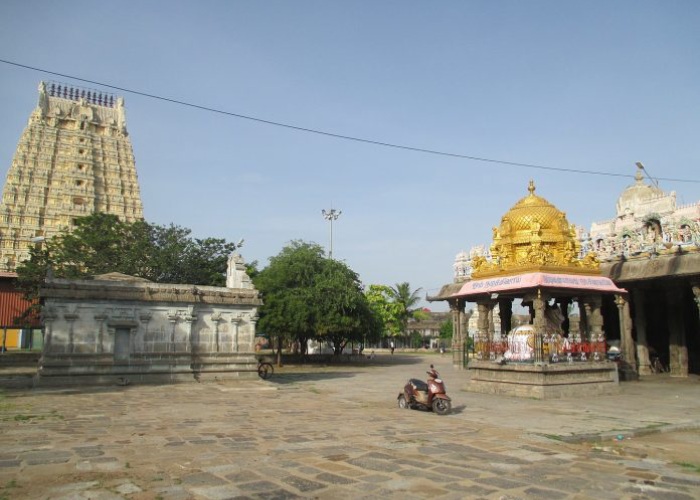
Facts about Nilthingal Thundam Perumal temple
- This Nilathingal Thundam Perumal Temple is on the Northeast corner of Sri Ekambareswarar temple ( one of the Thevaram Padal Petra Shiva Sthalam ) prakaram located in Kanchipuram.
- The Ekambareswarar temple is spread across more than 23 acres (93,000 m2). The temple’s Raja Gopuram (entry tower) is one of the highest in South India, standing at 59 metres (194 feet).
- The Vijayanagara Kings created the Aayiram Kaal Mandapam, or “hallway with a thousand pillars,” which is a significant feature of the temple.
- The Nilathingal Thundam Perumal Temple is classified as a Divya Desam, one of the 108 Vishnu temples that are mentioned in the book.
- Unlike other Vishnu temples with Vaishnavite priests, this temple has only Saivite priests because it is on the grounds of a Shiva temple.
- There are no festivals dedicated to the presiding deity. In one hymn, Thirumangai Alvar praises the temple in Nalayira Divya Prabandham, the 7th-9th century Vaishnava canon.
- The consort of Nilathingal Thundam Perumal Temple (also called Chandrasoodeswarar Perumal) is called Nilathingal Thunda Nayagi (also called Ver Oruvar Illa Valli).
- Because Goddess Lakshmi is in the position traditionally inhabited by Lord Brahma, it is claimed that worshipping her in this temple can affect the fate of followers in every way.
- By praying here, people can also get healing from heat-related disorders, and skin and stomach ailments, and their sibling relationships may improve.
Famous Festivals In Nilthingal Thundam Perumal temple
- Brahmmotsavam is the major festival celebrated in the temple.
- Chitra Poornima is also a major occasion for celebration in the temple.
- Vaikuntha Ekadashi – Vaikuntha Ekadashi celebrated during the Tamil month of Margazhi (December–January) is the major festival celebrated in the temple
How to reach Nilthingal Thundam Perumal temple
Nilathingal Thundam Perumal Temple is a Vishnu temple located in the ancient town of Kanchipuram, in the state of Tamil Nadu.
By Air: The nearest airport is Chennai, which is about 80 Kilometers from the temple.
By Railway: Kanchipuram is well connected by rail and has a railway station inside the city. Trains from Chennai, Madurai and Trichy arrive often.
By Roadways: Transport in Kanchipuram is active throughout twenty-four-seven and buses to all important cities are available.
Support Us
If our content helps you even 1% in gaining information about the temple, please support us by contributing any amount, our UPI ID is - q417999792@ybl Or pay using QR CODE >>> Click Now

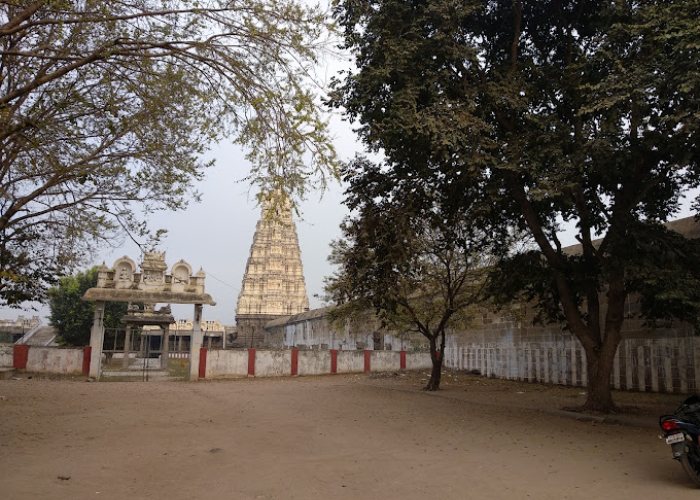
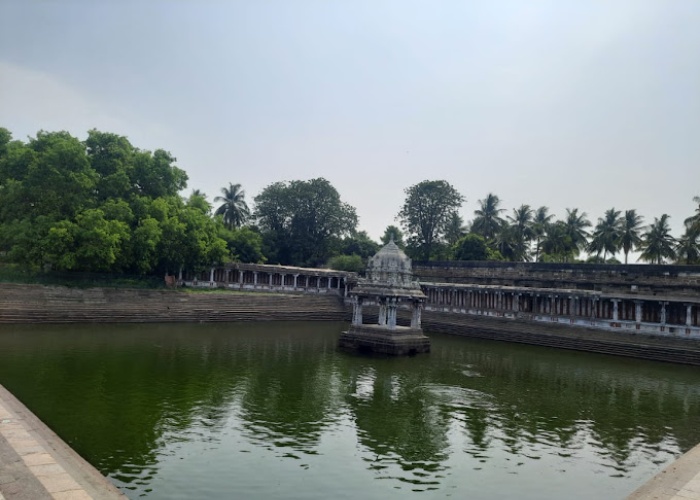



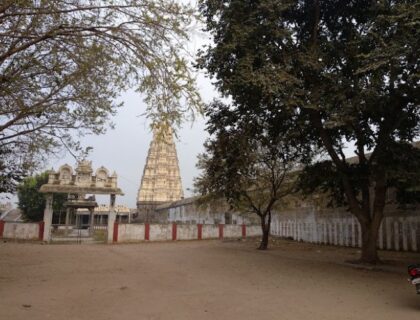


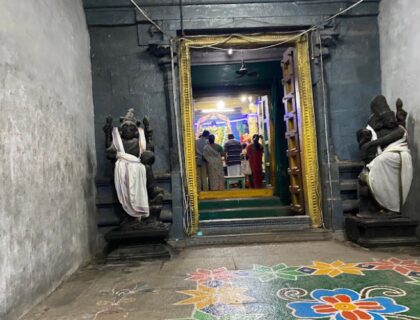
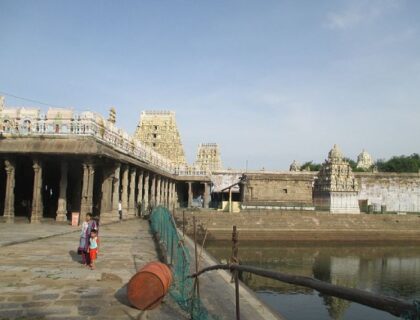

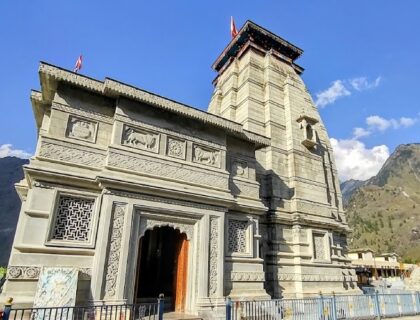
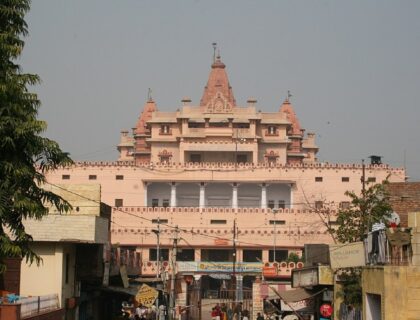
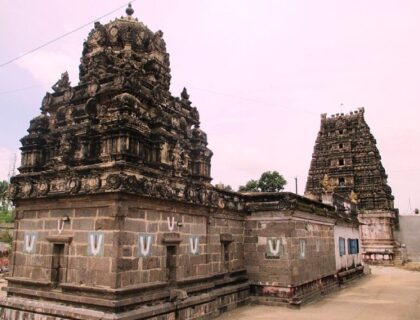
Reviewed on April 13, 2025